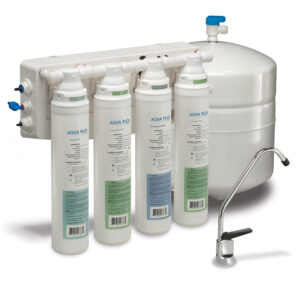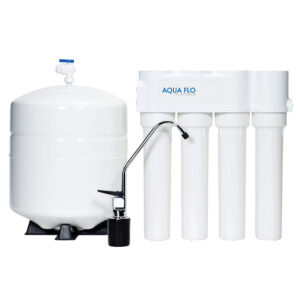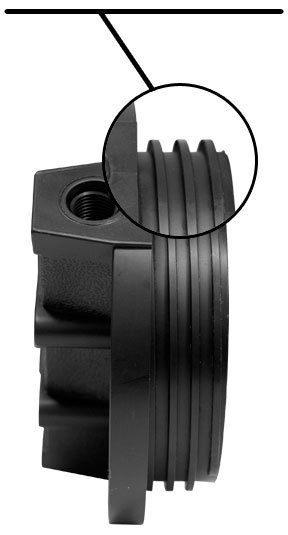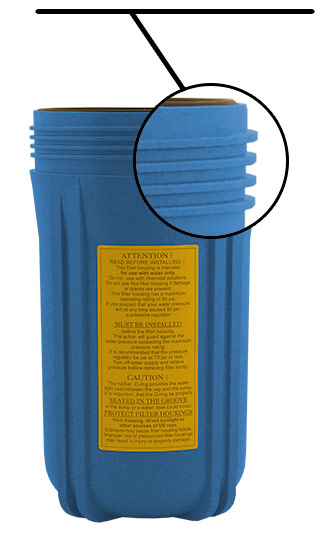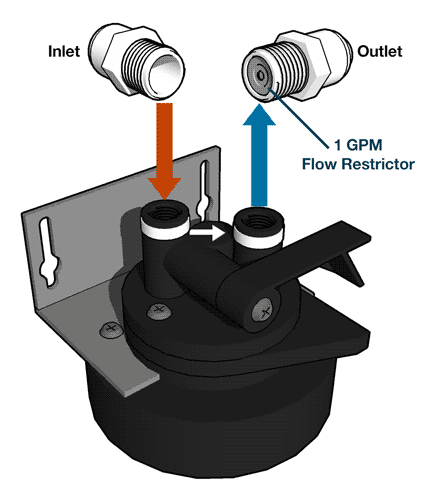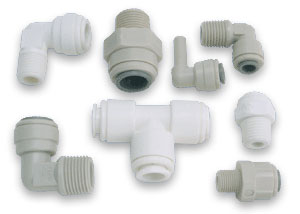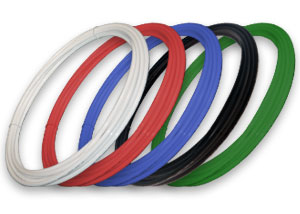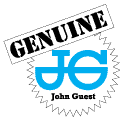Reverse Osmosis Home Systems
-

Reverse Osmosis Home System 50 GPD, Aqua Flo Quick-Change, Hydrotech QCRO4V-50
Add to Cart to See Price Top Seller- 50 Gallons Per Day Output
- Certified System
- Produces Purified Water Fast
- Quick-Change Cartridges
- Under Sink Reverse Osmosis System
-

4 Stage Reverse Osmosis System, Hydrotech
Add to Cart to See Price- 25 Gallons Per Day Output
- Includes Faucet, Tank & Accessories
- Under Sink Reverse Osmosis System
-

4 Stage Reverse Osmosis System, H2O USRO4-JG
From: $259.00 Top Seller- Under Sink Reverse Osmosis System
- Includes Luxury Faucet, Tank & Accessories
- 50 or 100 Gallons Per Day Output
- Produces Purified Water Fast
- Top Quality John Guest Fittings, Valves & Tubing
-

5 Stage Reverse Osmosis System, H2O USRO5-JG
From: $289.00 Top Seller- Under Sink Reverse Osmosis System
- Includes Luxury Faucet, Tank & Accessories
- 50 or 100 Gallons Per Day Output
- Produces Purified Water Fast
- Top Quality John Guest Fittings, Valves & Tubing
![]()
What is a Reverse Osmosis Home System?
Reverse osmosis home systems remove undesirable materials from water by using pressure to force the water molecules through a semipermeable membrane. This water treatment process is called reverse osmosis because the pressure forces the water to flow in the reverse direction (from the concentrated solution to the dilute solution), to the flow direction (from the dilute to the concentrated) in the process of natural osmosis.
Visit our ‘How Does Reverse Osmosis Work‘ guide to learn more and see the steps in a reverse osmosis system.
Reverse osmosis systems also purify water before sterilizing it with ultraviolet systems, or are attached to a bottle-less water cooler.
Our Selection of Reverse Osmosis Home Systems
Under-sink RO, 3 to 5 stages
- Typical layout, sediment prefilter, carbon block
- Thin-film composite membrane
- Optional post-carbon or remineralization
- Most residential models list a production range of 50 to 100 GPD
- Tanked and tankless versions available
Light commercial RO
- Higher output for offices, cafes, or multi-tap use
- Systems commonly specify 200 to 400 GPD and above
- Larger housings
- Higher capacity membranes
- Many include booster pumps and larger tubing for flow
Pump options
- Permeate pumps to improve efficiency without electricity in some models
- Electric booster pumps are used when incoming pressure is low or high GPD is required
Cartridge formats
- Standard 10-inch pre- or post-filters for easy sourcing
- Quick-change cartridges for faster maintenance on select systems
Add-ons and finishes
- Remineralization cartridges for taste
- Air gap or non-air gap faucets
- Larger or slim storage tanks, feed adapters, and tubing kits
Sizing and Setup
- Match production to use: Select a GPD rating that covers daily drinking and cooking needs. Typical homes use 50 to 100 GPD. Light commercial spaces may require 200 to 400 GPD or more.
- Check pressure and TDS: Most membranes require adequate inlet pressure. A booster pump can stabilize performance where pressure or TDS conditions warrant it.
- Plan your footprint: Confirm space for housing, tank if included, and service clearance. Tankless models save space but often require higher inlet pressure.
- Drain and faucet: Systems need a drain saddle and a dedicated faucet. Choose an air gap or a non-air gap to match local preferences or code.
- Maintenance: Replace sediment and carbon prefilters every 6 to 12 months, replace the RO membrane every 2 to 5 years, depending on water quality and usage, and replace postfilters on the same schedule as prefilters or as specified by the system.
What Does a Reverse Osmosis Water Filter Remove?
- Up to 90% of total dissolved solids (TDS) from water to provide the purest water available for your home.
- A wide range of contaminants and minerals from your drinking water, including sand, chlorine, fluoride, cryptosporidium, and hexavalent chromium
Why Choose a Reverse Osmosis Home System
- Targeted multistage filtration that addresses sediment and chemical taste or odor before and after the membrane
- Configurable output with tanked or tankless designs, pump options, and cartridge formats to fit space and performance goals
Effectively Removes Contaminants
Reverse osmosis systems utilize a semi-permeable membrane to filter out impurities, including chlorine, lead, mercury, and other harmful substances. By eliminating these contaminants, average tap water becomes purified and safe for you and your pets to drink.
Investing in a reverse osmosis home system helps protect your health. Drinking contaminated water can lead to various health issues, including gastrointestinal (GI) problems, skin irritations, and even long-term health risks.
Some people, such as those with autoimmune disorders, have a weakened immune system. It is easier for people with pre-existing conditions to get sick from unfiltered tap water.
Improved Taste and No Odor
Contaminants can create unhealthy drinking water, but some minerals and bacteria can produce a rotten egg odor. Water filtration systems, such as reverse osmosis, significantly reduce odor for pleasant drinking. Whether you’re using the water for cooking, making beverages, or simply quenching your thirst, you’ll notice a remarkable difference in water quality and odor.
Explore the wide range of reverse osmosis home systems offered by H2O Distributors, each tailored to meet specific needs. We only sell the top industry brands and carefully select those that provide the highest level of performance and reliability. With our commitment to quality, you can trust our parts and systems to deliver exceptional results.
FAQs for Reverse Osmosis Home Systems
Q: How many stages do I need for an RO system?
A: Three stages cover the basics: sediment, carbon, and RO membrane. Four to five stages add post-carbon or remineralization for enhanced taste.
Q: What size reverse osmosis home system fits a typical family kitchen?
A: Most homes choose 50 to 100 GPD. Larger households or those with heavy cooking needs can opt for a higher GPD or a tankless design with higher instantaneous flow.
Q: Do I need a pump for an RO system?
A: Use a booster pump if the inlet pressure is low or if you are selecting higher GPD membranes. Permeate pumps can enhance efficiency in specific tanked systems.
Q: How often do I change filters in a reverse osmosis home system?
A: Prefilters are typically 6 to 12 months. RO membranes are commonly 2 to 5 years old. Actual timing depends on water quality and usage.
Q: Can a reverse osmosis home system supply my whole house?
A: Whole home RO is a specialty application with additional storage and pressure equipment. Most installations use RO at a single or a few dedicated taps.
Shop Now for a Reverse Osmosis Home System
Ensure clean and odor-free drinking water in your home starting today. A reverse osmosis home system is the optimal choice due to its numerous benefits and effective purification process, providing healthy water.
H2O’s dedication to offering superior water filtration systems distinguishes us from the competition, as well as our top-notch customer service. Stop wasting your time buying from wholesale suppliers. Shop at H2O Distributors, where our team of water filtration experts can help with installation and any questions you have through email or our website chat.
Don’t compromise on your home’s water quality. Enhance it with a reverse osmosis home system from H2O Distributors and experience the difference it can make in your daily life.
Reverse Osmosis Home System Guides
Reverse Osmosis Home System Installation Guide
Replacing Cartridges & Sanitizing System
Reverse Osmosis System Comparison
Pressure / Temperature Chart

